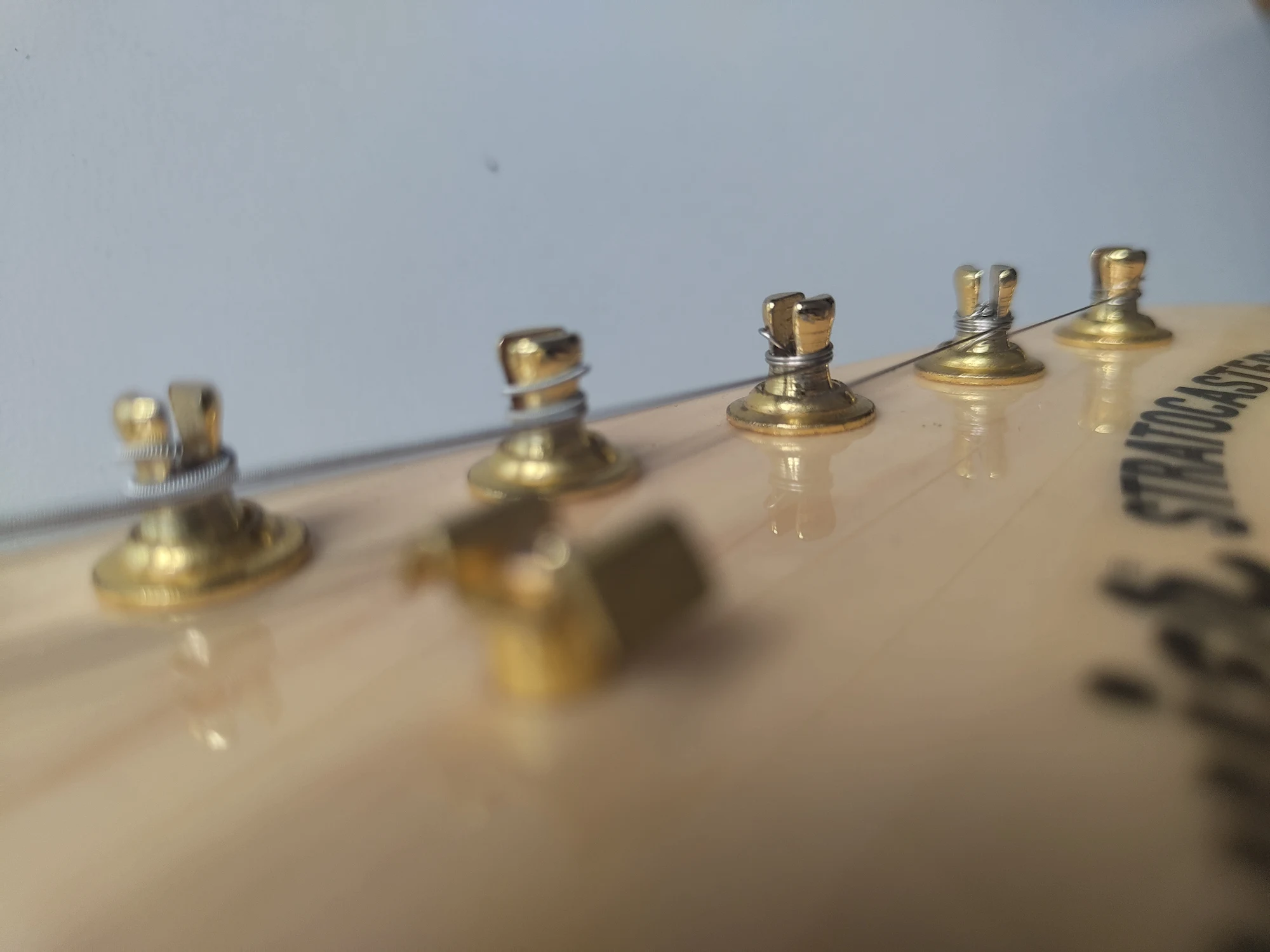In Defense of the Split-Shaft Tuner
Published on: 6/24/2025

In the world of guitar hardware, the pursuit of convenience and precision has led to the widespread adoption of locking tuners. Often touted as the pinnacle of tuning stability and string-changing efficiency, they've become the go-to for many modern players. But in this rush for innovation, have we overlooked the elegant simplicity and steadfast reliability of a classic design? It's time to champion the unsung hero of the headstock: the vintage split-shaft tuner.
Often dismissed as archaic or fiddly, the split-shaft tuner, a design long associated with Fender guitars, is a masterclass in functional minimalism. When properly understood and utilized, it not only holds its own against its locking counterparts but, in some respects, surpasses them.
The Myth of Superior Tuning Stability
The primary sales pitch for locking tuners is their seemingly unshakeable grip on your strings, promising a guitar that stays in tune through the most aggressive dive bombs and bends. While they do prevent string slippage at the post, the notion that this is the sole or even primary cause of tuning instability is a misconception.
In reality, a properly wound string on a vintage split-shaft tuner is just as stable. The genius of the split-shaft design is its self-locking nature. By inserting the string into the center of the post and then winding it, the string cinches down on itself, creating a secure anchor with minimal wraps. This clean, tight wind eliminates the potential for the string to shift and settle, which is the true culprit of tuning woes when using tuners with a through-hole.
The "secret" to unlocking this stability lies in a simple, time-tested technique: measure the string to the next tuning post, cut the excess, insert the end into the shaft, and wind. With just a couple of neat wraps, the string is locked in place, providing tuning stability that is indistinguishable from a locking tuner for the vast majority of players.
The Art of the String Change: A Matter of Perspective
Locking tuners are often lauded for their lightning-fast string changes. And while it's true that they reduce the amount of winding, the time saved is often exaggerated. A seasoned guitarist can restring a guitar with vintage tuners with surprising speed.
Furthermore, the process with split-shaft tuners is arguably more elegant and leaves a cleaner result. There are no sharp, protruding string ends to snag on your gig bag, clothing, or fingers. The trimmed end of the string is safely tucked away within the tuner post, creating a tidy and professional appearance. This detail, while seemingly minor, is a testament to the thoughtful design of these classic components.
Aesthetic and Tonal Integrity
For many guitarists, the visual appeal of their instrument is paramount. Vintage-style tuners contribute to a classic, uncluttered aesthetic that many modern, bulky locking tuners simply cannot match. Their smaller footprint and traditional look are integral to the vibe of vintage and vintage-inspired guitars.
Beyond a guitar's look, there's the ever-debatable topic of tone. While the sonic impact of tuners is negligible, the additional mass of many locking tuners can, in theory, affect the resonance of the headstock. Here at Mersey Guitar, we'd strongly argue that the actual tonal effect of changing your tuners is imperceptible.
Simplicity and Longevity
The beauty of the vintage split-shaft tuner lies in its simplicity. With fewer moving parts than a locking tuner, there is inherently less to go wrong. There are no clamping pins to strip or break, no thumbwheels to overtighten and damage the string. This straightforward design has proven its durability over decades of use on countless iconic instruments.
A Call for Reappreciation
This is not a declaration of war on locking tuners. They are a fine innovation that serves a purpose, particularly for players who frequently use aggressive tremolo systems or need to perform mid-set string changes under pressure. However, the narrative that they are unequivocally superior deserves to be challenged.
The vintage split-shaft tuner is a testament to the idea that a well-thought-out, simple design can often be the most effective. It offers exceptional tuning stability when strung correctly, a clean and classic aesthetic, and a level of reliability that has stood the test of time. So, the next time you're considering a tuner "upgrade," take a moment to appreciate the elegant and effective design of the humble split-shaft tuner. You might find that the perfect solution has been there all along.